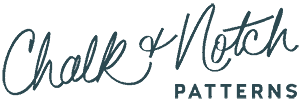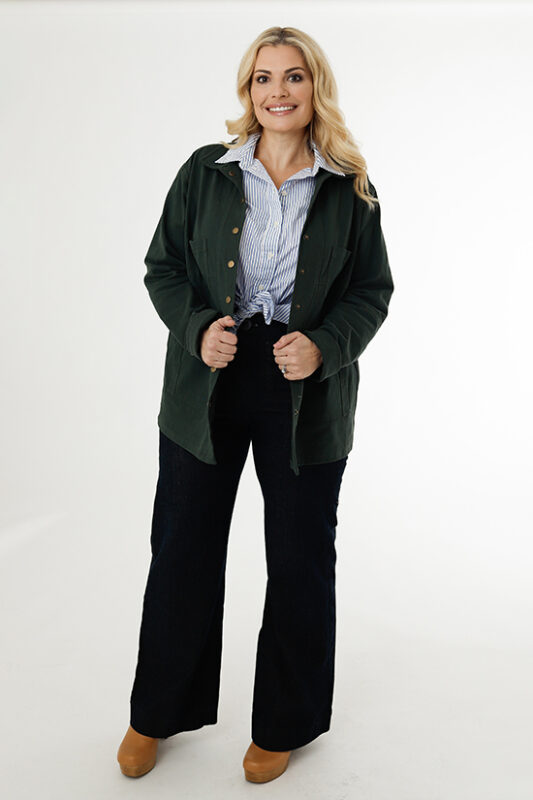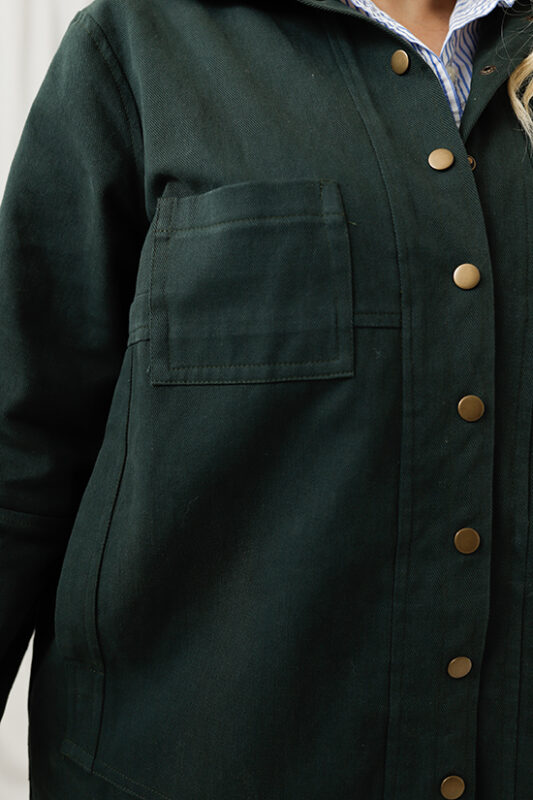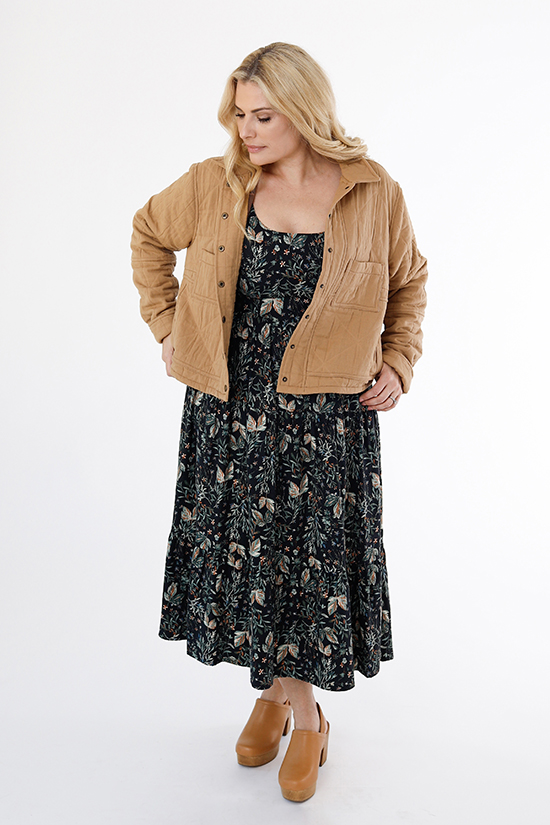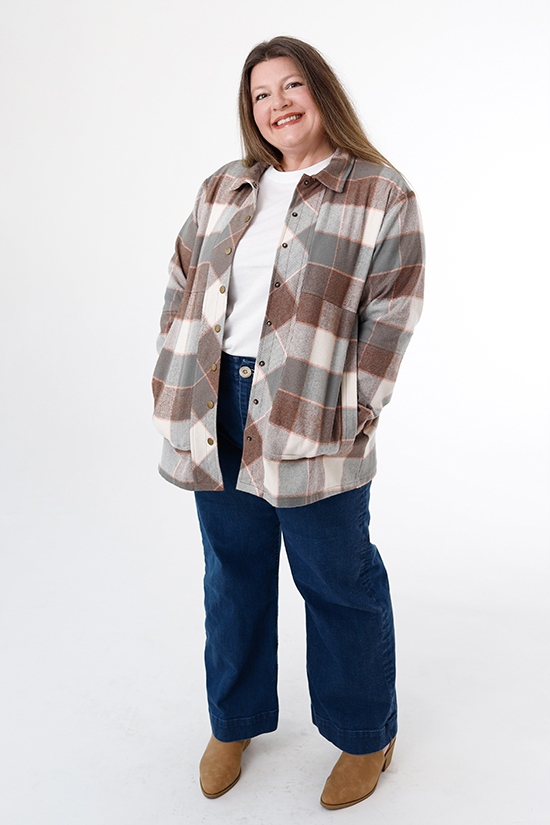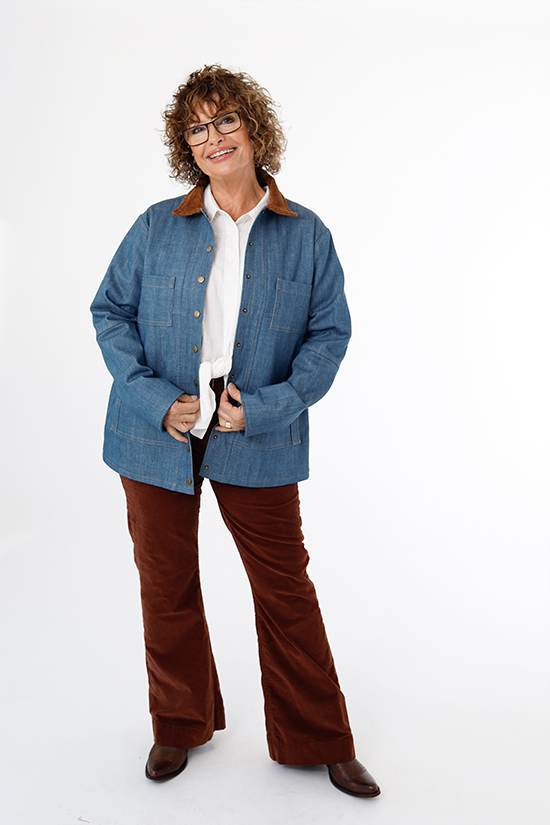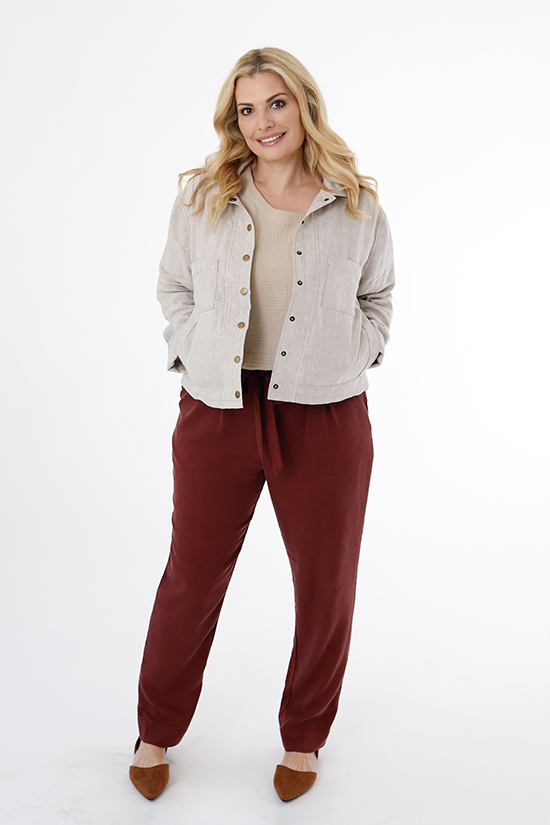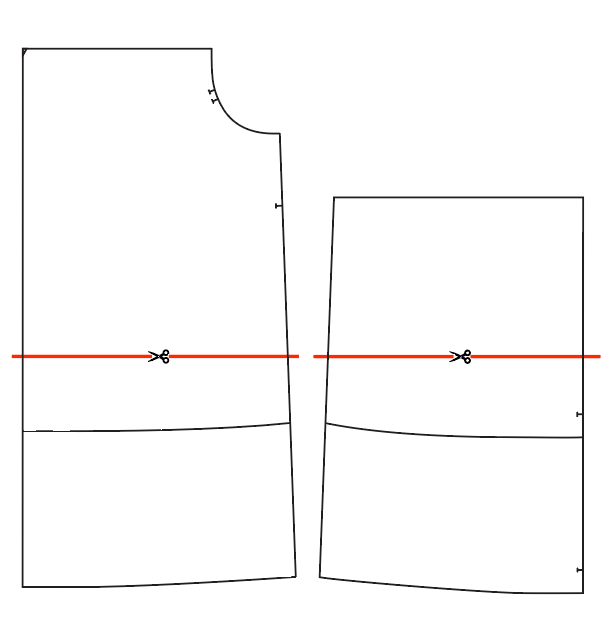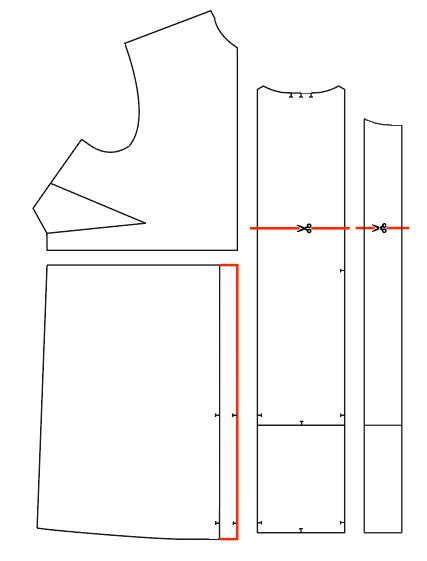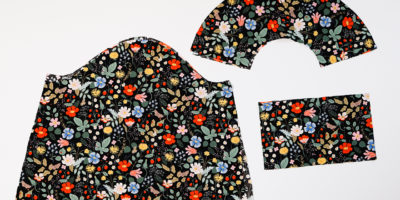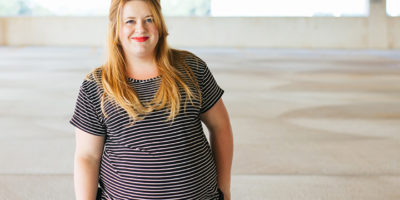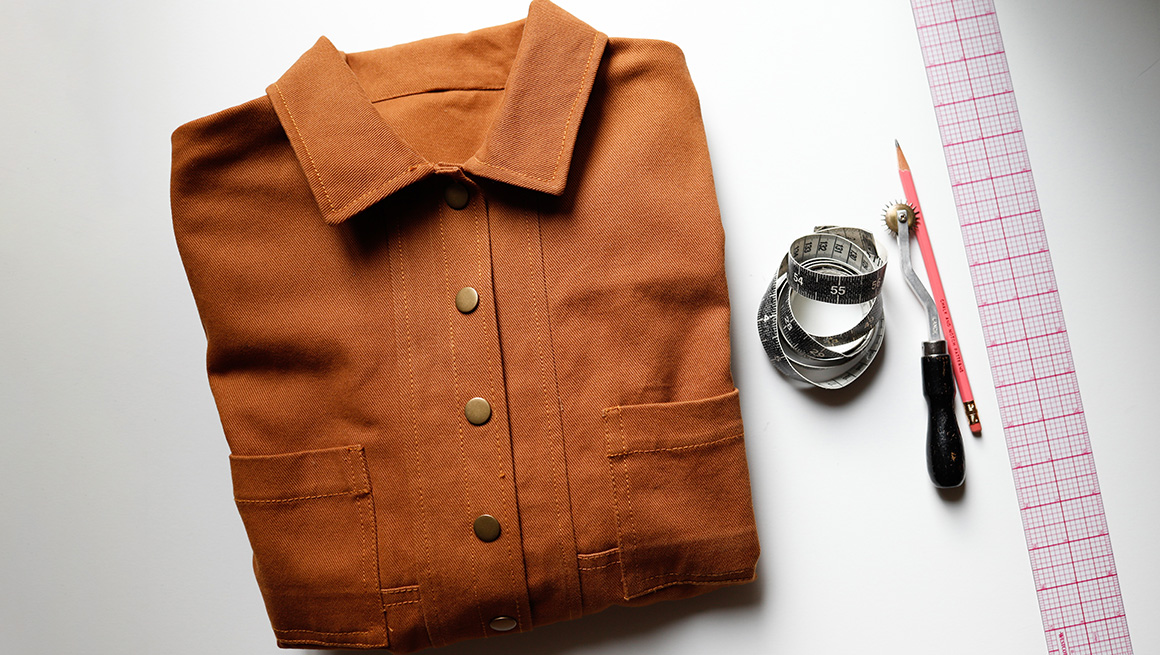
Looking for assistance fitting the Den Jacket? You’ve come to the right place! We have put this post together to cover the most common fitting adjustments you may need for the Den Jacket sewing pattern. Find fitting posts for each of our patterns in the fitting and custom adjustments library here.
You can check out our Tester Inspiration post here if you’re interested in seeing it on a variety of body types. During testing, we work through the fit for each tester, which helps inform what fitting and custom adjustments we talk about in our fitting posts. Most of these adjustments are included in the pattern tutorials, and if more fit questions come up, we will continue to add them to the blog post.
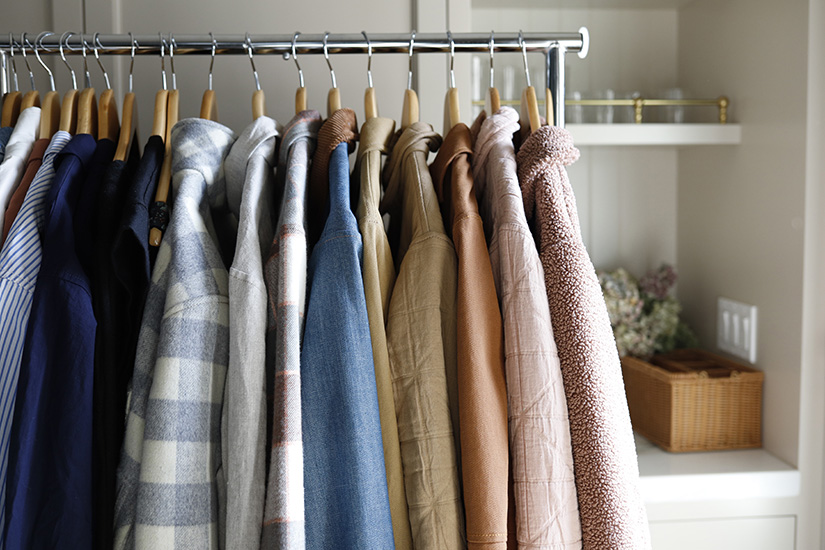
The Den is a woven jacket with an optional lining. View A is a cropped length finishing mid-rise. View B is hip length finishing at the lower hips.
Before we get started, I always like to add a note that the goal should be to create a comfortable garment that you will enjoy wearing. I don’t think it’s important to get rid of every single drag line and pull, so be kind to yourself as you are analyzing your fit. If you have specific questions about fitting the Den Jacket, you can always reach out in our Chalk and Notch Facebook Group or email us here.
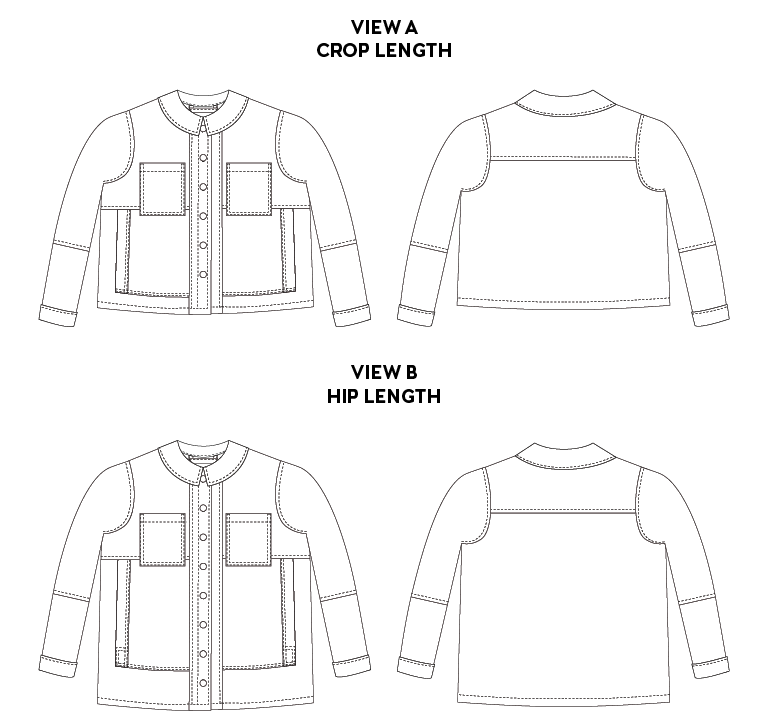
HOW TO PICK A SIZE
First, make sure you take new measurements before starting any project because our bodies change, and starting with accurate numbers is the first step to getting a good fit. You will need the following measurements:
High Bust – Measure around your body, above your bust, just under your arms. Make sure your tape is level around your body. Rest your arms at your sides when measuring.
Full Bust – Measure around your body, at the fullest part of your bust. Make sure your tape is level around your body. Rest your arms at your sides when measuring.
Waist – Measure around your body, at the smallest part of your torso. If you are having trouble finding your waist, lean over to one side, your waist is where your body bends.
Hips – Measure around your body, at the fullest part of your hips/bum. The cropped length finishes above the hips, so this measurement is not relevant when sewing view A.
There are a few other measurements that will be helpful to know. Cross-check these with the finished garment measurement chart to see if you need any custom adjustments.
Shoulder to Shoulder – Measure from 1″ past your shoulder bone on either side across your back. The shoulder seam is designed to sit 1″ down from your shoulder bone.
Sleeve Cap to Wrist – Measure from 1″ past your shoulder bone to your wrist. The sleeve includes added length for a fold-back cuff. You want about 2″ (5 cm) extra for a fold-up cuff.
Bicep – Measure around your bicep, about 1″ (2.5 cm) down from the armhole. You want at least 2″ of ease in your bicep, more if you plan on wearing thicker layers under your jacket.
Wrist – Measure around your hand at the widest point to make sure the wrist opening is comfortable.
Back Length – Measure from the base of your neck to where you want your jacket to finish.
BODY MEASUREMENTS
Use the high bust and full bust measurements to determine your size. It is always recommended to sew a test garment to confirm fit. You may want to size up if lining or using a thick fabric.
This pattern includes two bust cup options and the cup size is determined by calculating the difference between the high and full bust. If the difference between your high bust and full bust is between 0″ and 2″ (5 cm) use the A/B cup. If the difference is between 2″ (5 cm) and 4″ (10 cm) use the C/D cup. If you have more than a 4″ (10 cm) difference, you may need a full bust adjustment.
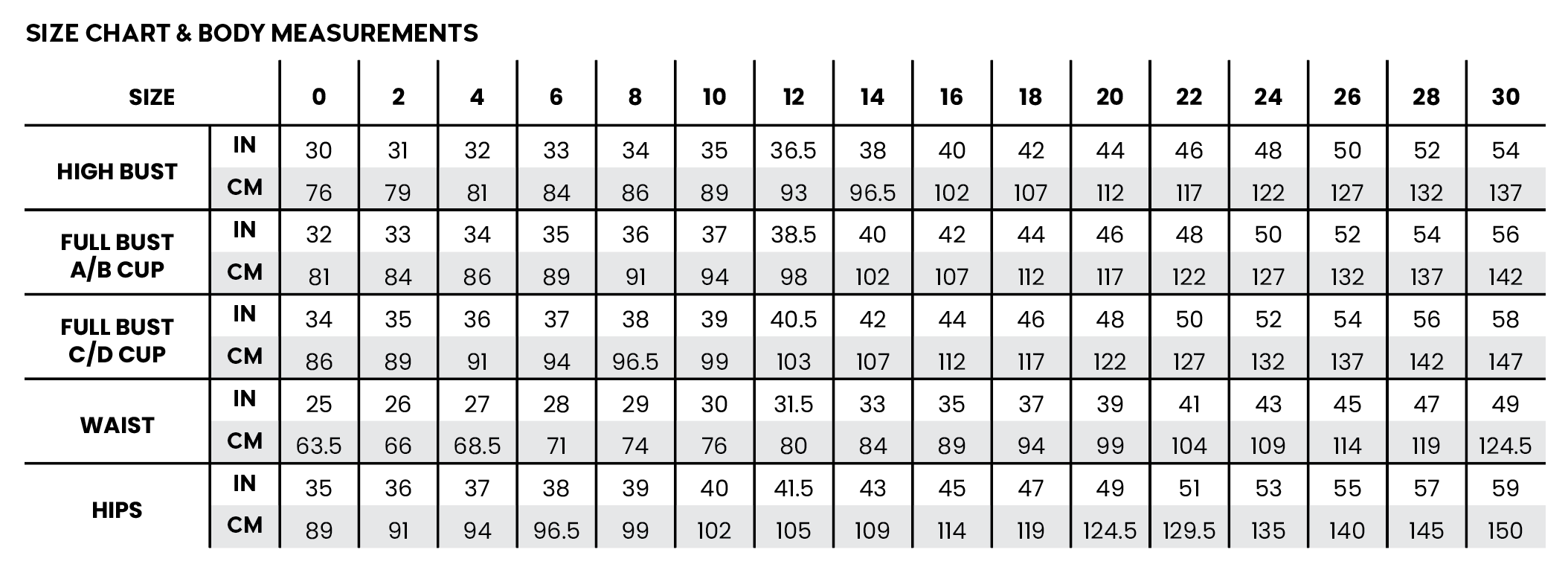
FINISHED GARMENT MEASUREMENTS
Pick the size for each of the measurements that works best for your body and preferred fit. You may need to blend sizes.
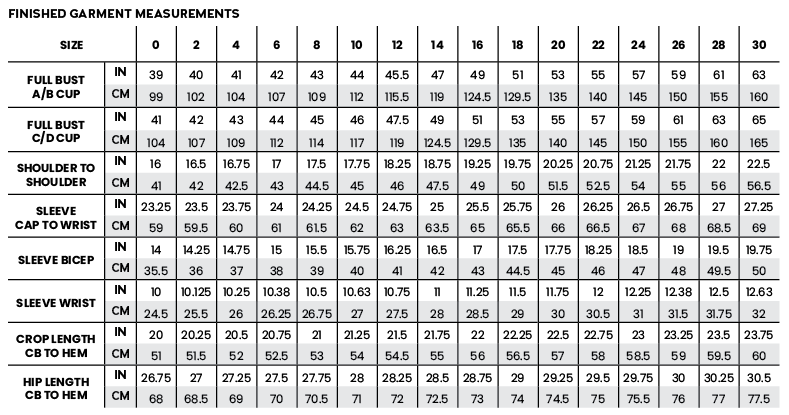
REVIEW THE INTENDED EASE & FINISHED LENGTH
BUST – There is 7″ (18 cm) of ease through the bust.
WAIST – There is 15″ (38 cm) of ease through the waist. When sewing the C/D cup, there will be 2″ (5 cm) of additional ease through the waist and hips in the hip length view.
HIPS – There is 7″ (18 cm) of ease through the hips. The cropped length finishes above the hips, so this measurement is not relevant when sewing view A.
FINISHED LENGTH – The finished length of the cropped version (view A) ends mid-rise above the hips. The finished length of the hip length version (view B) ends at the low hip.
MAKING A MUSLIN
I will always advise you to make a muslin or toile (test garment) before cutting into your final fashion fabric. When sewing the Den for the first time, I highly advise that you pick a fabric that is medium weight and holds a press well. We have a recommended fabric post for the Den Jacket here.
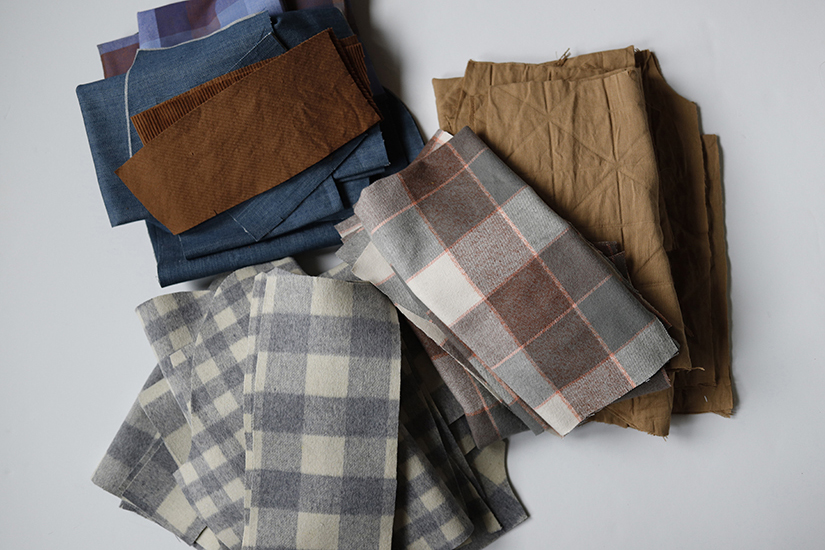
CUSTOM ADJUSTMENTS
Often there are many ways to make the same adjustments, and making a simple adjustment can affect many areas. The following are the most common adjustments we have seen during testing.
LENGTHEN/SHORTEN BODICE
If you decide you would like to add or remove length through the torso, adjust at the lengthen/shorten line on the front lower and back bodice pieces and the center front placket and fusible. Note that there is a 3/4″ (2 cm) seam allowance at the bodice hem.
- Cut the pattern pieces horizontally at the indicated line.
- Re-draw the side seam.
- Consider adjusting the pocket height if removing or adding more than 1.5″ (4 cm).
- Adjust the lining and center front placket, see below.
- Adjust the center front fusible, see below.
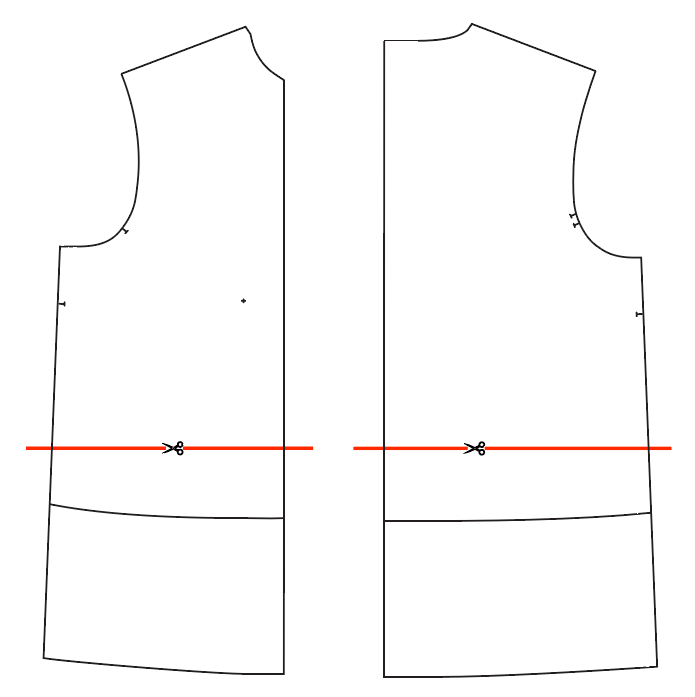
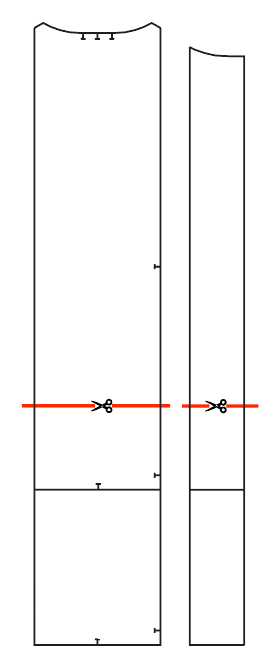
LENGTHEN/SHORTEN SLEEVE
If you decide you would like to add or remove length in the sleeve, adjust at the lengthen/shorten line on the upper sleeve and sleeve lining. The sleeve cap has a 1″ (2.5 cm) drop from the shoulder point and the hem is designed to be turned up.
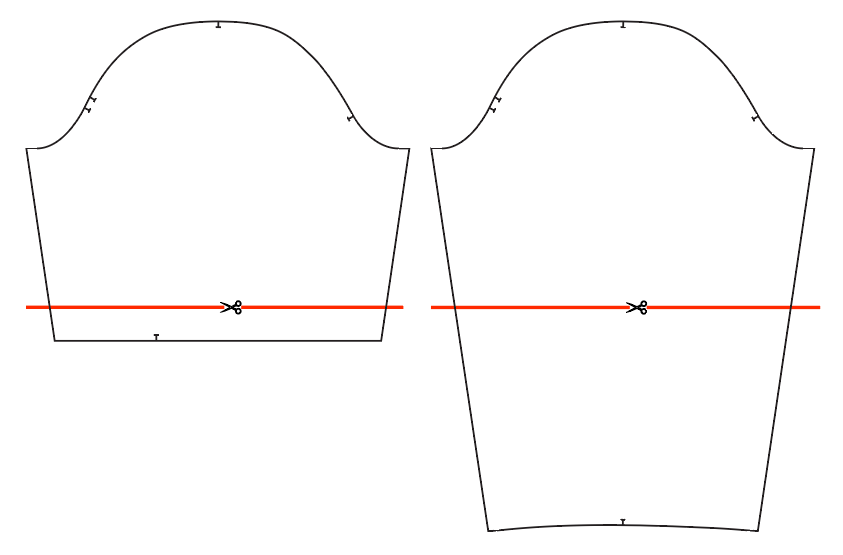
- Cut the pattern pieces horizontally at the indicated line.
- Re-draw the side seam.
- Adjust the sleeve lining.
SHOULDER ADJUSTMENT
There is a shoulder to shoulder point measurement on the finished measurement chart. To find the shoulder to shoulder point, measure from 1″ past your shoulder bone on either side across your back. If you need to adjust your pattern, you can make the shoulders wider or narrower.
- First decide how much you want to adjust your shoulder width, and half that amount will be adjusted on your pattern pieces.
- This adjustment will be made on the upper front and back yoke pieces.
- Add your 3/8″ sew lines to the shoulder seam and armhole. cut from the mid-shoulder (#1) to the upper armhole (#2) without cutting all the way through the seam allowance.
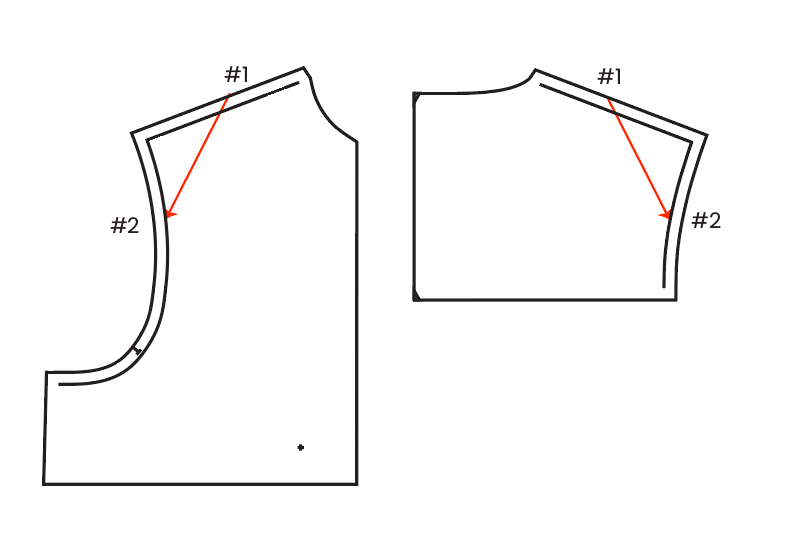
TO REMOVE WIDTH AT THE SHOULDERS
Start with your upper front pattern piece. Pivot your corner piece at the armhole hinge #2) and rotate it down so that the shoulder is overlapping the desired amount. Cut from the bottom of the corner piece (#4) to the shoulder point (#3) without cutting all the way through the seam allowance. Open the ease at #4 and make your shoulder seam straight. Re-trace your shorter shoulder seam and narrow armhole shoulder point. Make the same adjustment for the back yoke piece.
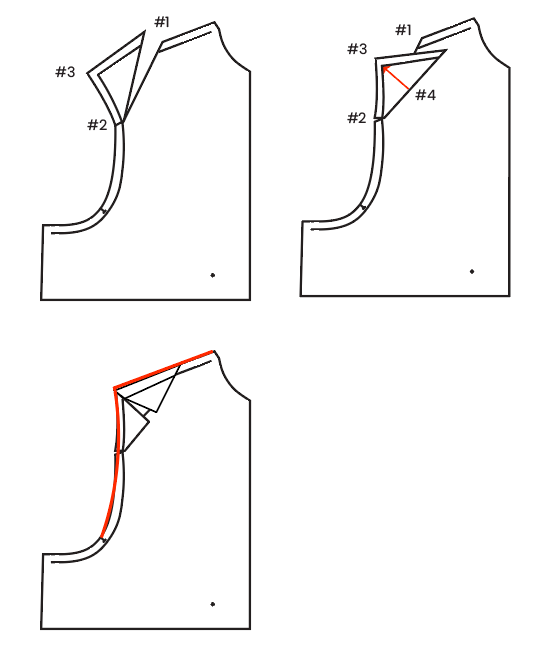
TO ADD WIDTH TO THE SHOULDERS
Start with your upper front pattern piece. Pivot your corner piece at the armhole hinge (#2). Cut from the bottom of the corner piece (#4) to the shoulder point (#3) without cutting all the way through the seam allowance. Overlap the ease at #4 and make your shoulder seam straight, adding the amount desired. Re-trace your longer shoulder sea and wider armhole shoulder point. Make the same adjustment for the back yoke piece.
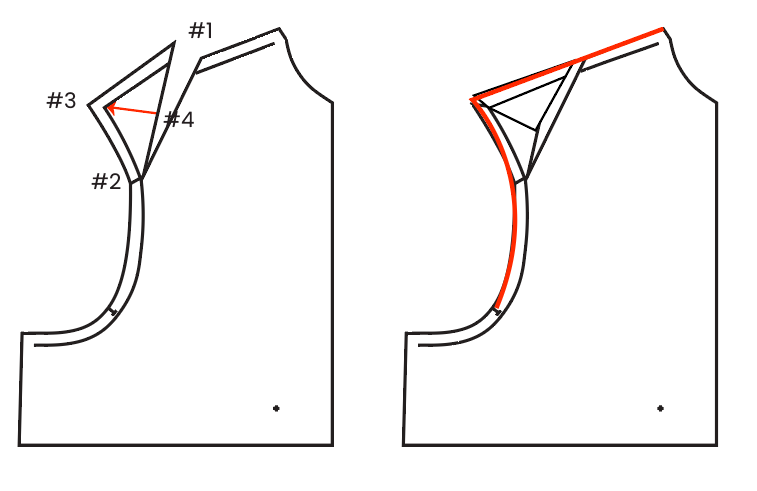
FULL BUST ADJUSTMENT
If you have over 4″ (10 cm) between your high bust and full bust, you may need a Full Bust Adjustment to the C/D Cup Bodice. First decide how much more ease you need through your bust, and you will add half that amount to your pattern. Ex: If you need 1″ (2.5 cm), then you will add 1/2″ (1.25 cm) to the pattern.
- Cut from just below the bust point (#1) to the bust point (#2) and to the armhole (#3), not cutting all the way through at the armhole. Lay this on top of a new piece of paper.
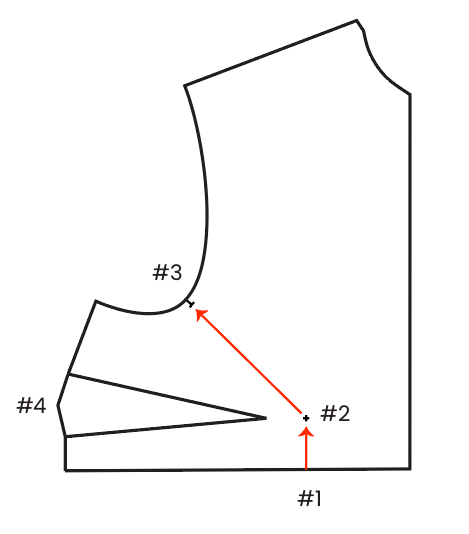
- Cut from the center of the bust dart (#4) to the bust point (#2) without cutting all the way through at the bust. Open the ease at the bust #4 and make your pattern parallel by adding the same amount down to the hem (#1). When doing this, you will open ease at the points (#1 & #4), creating larger darts and adding more length through the center front.
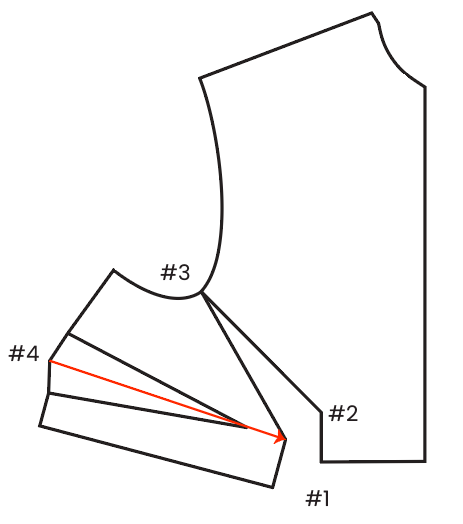
- Tape this new shape down on the paper and trace. Mark your new dart points 2″ (5 cm) back from the bust point (#2). Draw the dart lines from this new point to the dart notches.
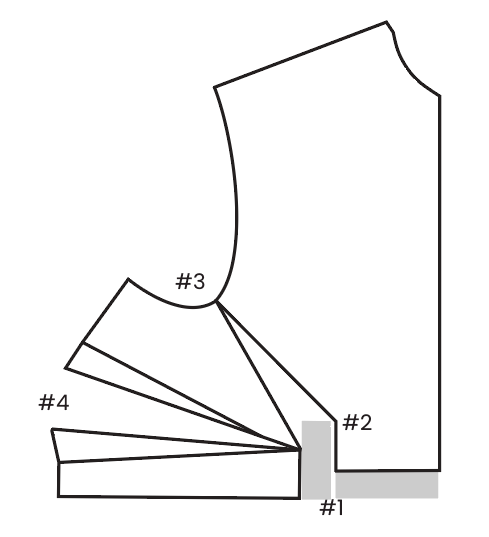
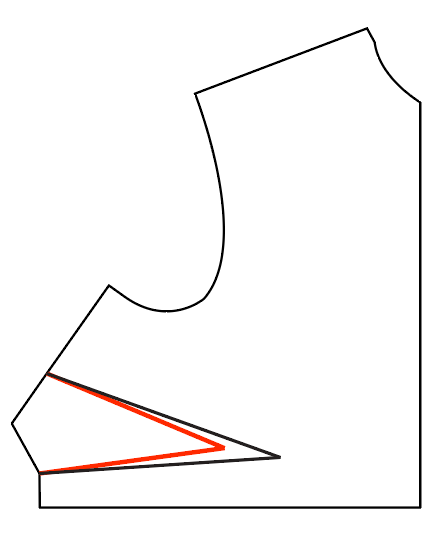
You have completed the FBA on the upper front pattern piece. Make the same adjustment to the lining front pattern piece.
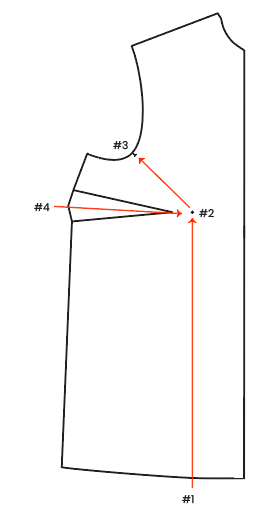
A few other pattern pieces will need to be adjusted: Lower Front, Center Front Placket, and Center Front Fusible.
- Add more width to the front lower pattern piece and the front fusible pattern piece to match the upper front bodice.
- Add more length above the middle notch to the center front placket and center front fusible.
Hopefully, this has been helpful as you navigate fitting the Den Jacket pattern. It’s totally worth the time to make a muslin, make any adjustments, and update your printed pattern. Remember to write down some notes for yourself so that when you come back to the pattern, you know what adjustments you have made. If you have any other fit questions, please let me know, and I can update the post as needed.
Happy Sewing!
XO, Gabriela
